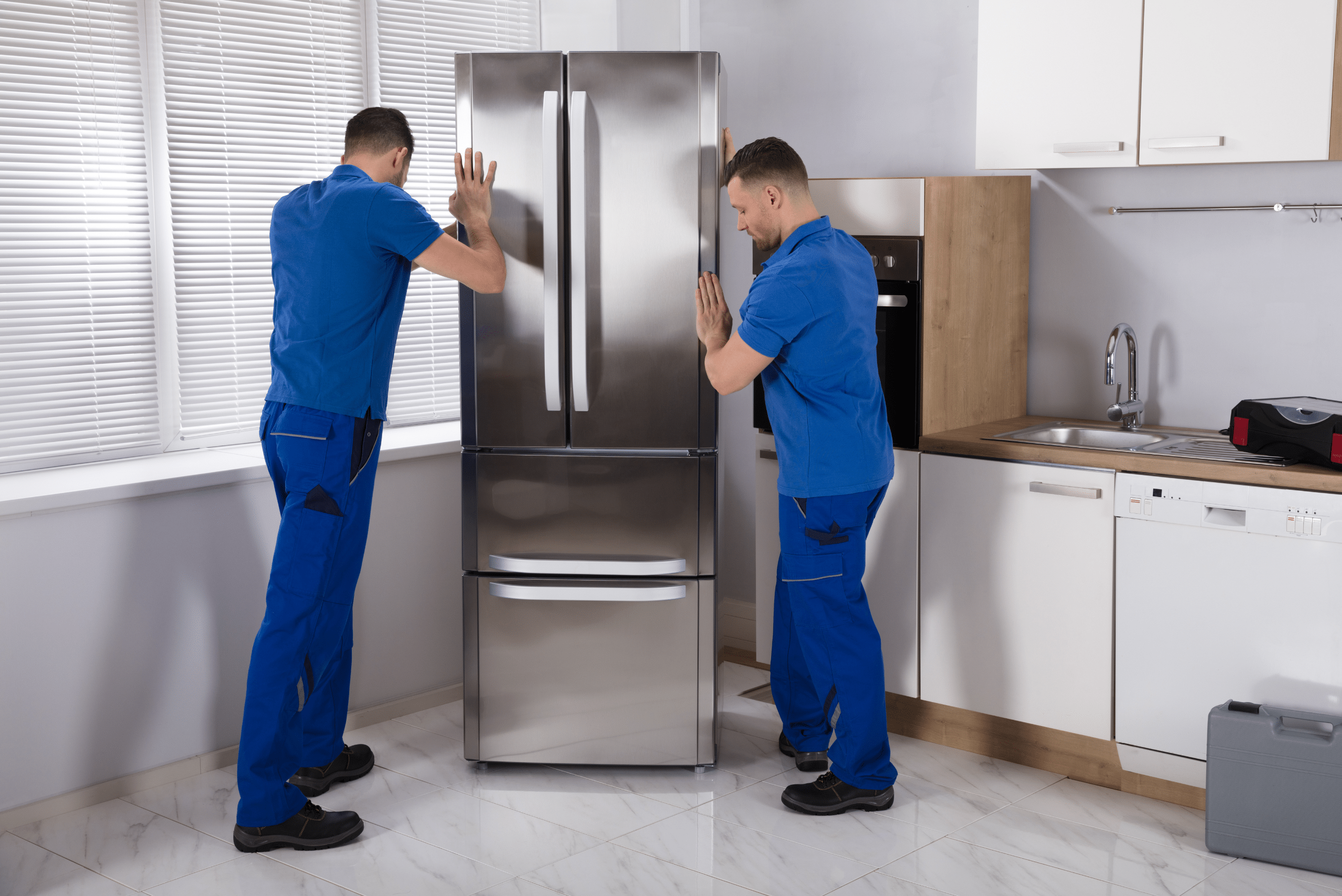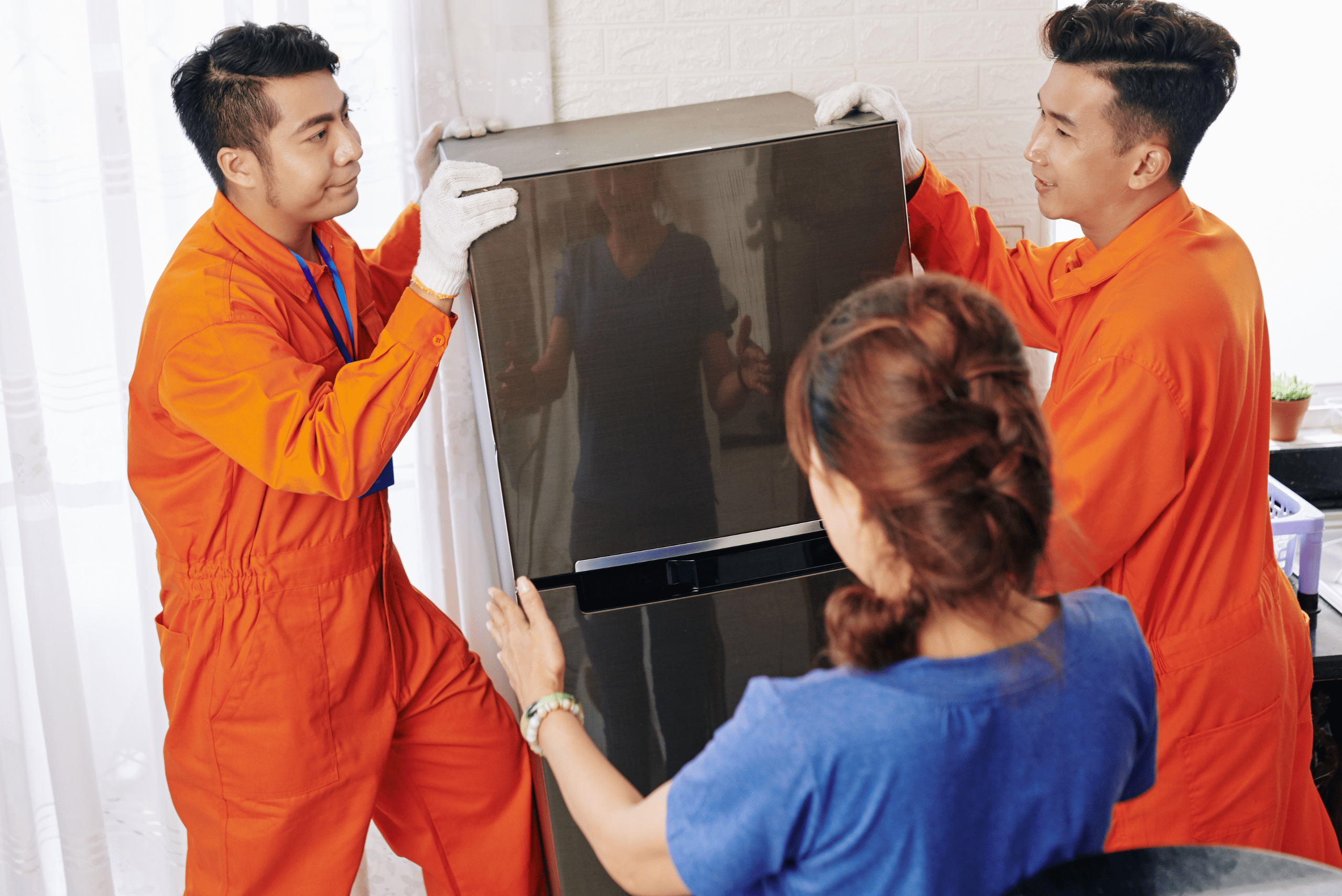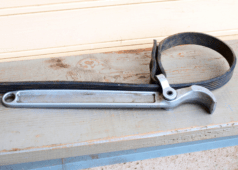How to Move a Refrigerator Without Throwing Out Your Back
Moving a refrigerator is a formidable task that demands meticulous preparation and the correct approach to ensure both your safety and the appliance’s preservation. Given that refrigerators can weigh between 200 and 400 pounds, improper handling can lead to personal injury or damage to your home and the unit itself. However, in this guide, we will cover the considerations and tips that you should know before moving a refrigerator.
Steps For Safe Fridge Moving
Moving a refrigerator requires careful planning and proper technique to ensure both your safety and the appliance’s integrity. Here’s how to accomplish this task without straining your back.

Preparation
Begin by emptying the refrigerator, removing all food items, and storing them in a cooler to maintain freshness. Unplug the appliance and, if necessary, defrost the freezer to prevent water leakage. Remove or secure any loose shelves and drawers to prevent movement during transit.
Gather Necessary Equipment
Equip yourself with an appliance dolly, essential for transporting heavy items like refrigerators. Furniture straps can help distribute the weight evenly, reducing strain on your back. Additionally, wearing gloves will enhance your grip and protect your hands.

Measure and Plan the Route
Measure the refrigerator and the doorways to ensure the appliance can pass through all entryways leading to its new location. Clear any obstacles, such as furniture, that could obstruct the path.
Moving the Refrigerator
With the help of a partner, carefully tilt the refrigerator and slide the appliance dolly underneath from the side. Secure the appliance to the dolly using straps, keeping it upright to prevent compressor oil from entering the cooling lines. When lifting, bend at your knees and keep your back straight to avoid injury. Move slowly, especially when navigating corners or stairs, to maintain control.

Positioning in the New Location
Once in place, allow the refrigerator to stand upright for at least a few hours before plugging it in. This pause lets the compressor fluids settle properly. Afterward, plug the appliance back in, ensure it’s functioning correctly, and then restock your food items.
Safety Tips
Avoid moving the refrigerator alone; having at least one other person assist you distributes the workload and enhances safety. Always lift with your legs, not your back, and avoid twisting your body while carrying heavy items. If the task seems too daunting, consider hiring professional movers to prevent potential injuries and damage.
Other safety tips to consider:
- Keep the Refrigerator Upright: Always transport the refrigerator in an upright position to prevent compressor oil from leaking into the cooling lines, which can cause damage.
- Protect Your Floors: Place floor protectors or cardboard along the path to prevent scratches or damage during the move.
- Secure the Doors: Use bungee cords or strong tape to keep the refrigerator doors closed during transit, preventing accidental openings.
- Avoid Sharp Turns and Inclines: Move slowly and steadily, avoiding sudden movements that could destabilize the refrigerator or cause injury.
- Allow the Refrigerator to Settle: After moving, let the refrigerator stand upright for at least 24 hours before plugging it in to allow the compressor fluids to settle.

Related Articles
- Large Furniture Moving: Tips for Easy Relocation
- Moving Container Vs. Rental Truck: The Pros & Cons
- 4 Subtle Signs That Indicate Major House Problems
By following these steps and prioritizing safety, you can move your refrigerator efficiently without risking back injury. Pay careful attention to how you are lifting the fridge and consider enlisting the help of another person to minimize the risk of injury, especially if you are moving the fridge over any stairs.
Ready to start your next project? Join our DIY community to receive tool tips, how-to guides, and exclusive creative insights. Subscribe to the ManMadeDIY newsletter now! Click here to unlock a world of hands-on inspiration.









